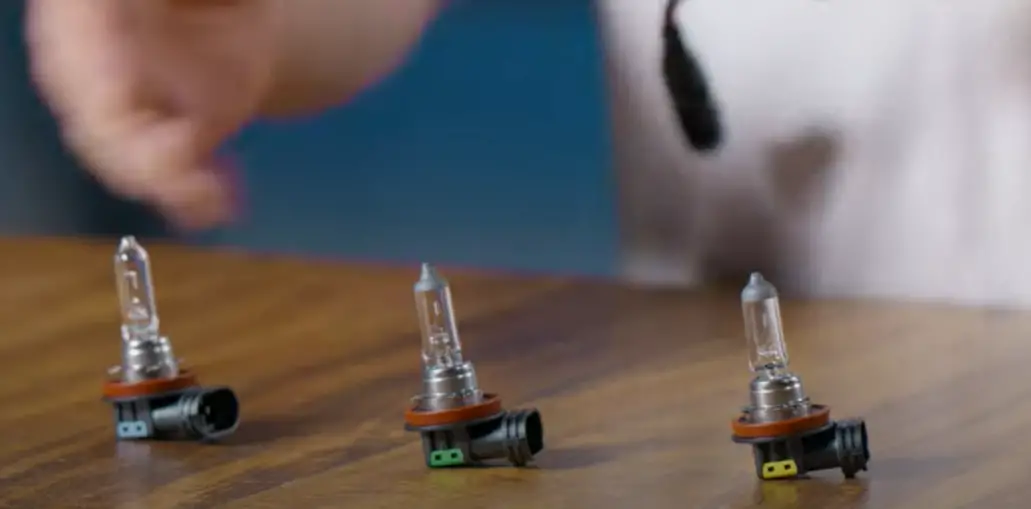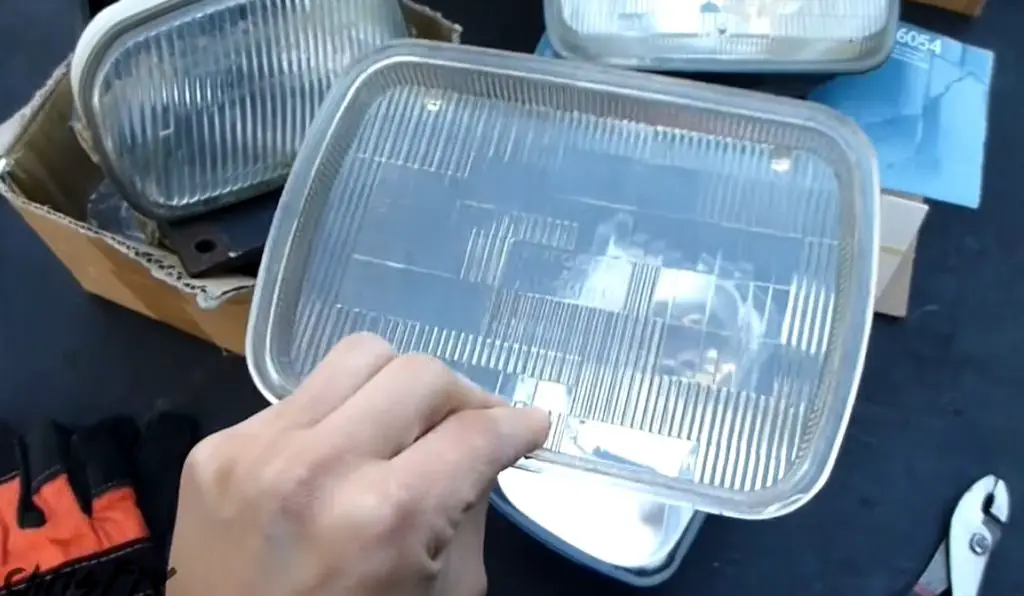You should change your headlights approximately every two years or sooner if they dim or burn out. Headlight longevity can vary depending on usage and bulb type.
Ensuring your car has functional headlights is crucial for driving safety. Regular maintenance includes checking these lights for both performance and legal compliance. Dim or non-functional headlights can significantly impair night-time visibility and increase the risk of accidents. Different bulb technologies, such as halogen, HID, or LED, offer varying lifespans and performance characteristics.
Drivers should monitor their headlight condition regularly and be proactive in replacing bulbs to maintain optimal illumination. Early replacement can prevent sudden light failure, contributing to a safer driving experience.

Car owners should also recognize the signs of aging headlights, which can be subtle but indicative of the need for attention. Let’s explain “How Often Should You Change Your Headlights?”
Introduction To Headlight Maintenance
Proper headlight maintenance is crucial, both for your safety and the safety of others on the road. Regular checks and timely replacements ensure optimal visibility during night-time driving and poor weather conditions.
Understanding Headlight Importance
Headlights serve as a vehicle’s eyes, permitting drivers to see and be seen. Dull or faulty headlights can significantly increase the risk of accidents after dark. Ensuring your headlights function correctly is not just beneficial; it’s a legal requirement in many areas.
Different Types Of Headlights And Their Lifespans
Headlights come in various technologies and materials, each with a distinct lifespan:
- Halogen: Common and affordable; lasts about 500 to 1,000 hours
- HID (High-Intensity Discharge): Brighter light; lasts 2,000 hours or more
- LED (Light Emitting Diodes): Energy-efficient; can last 5,000 to 30,000 hours
Regularly review your owner’s manual and keep track of your headlight’s health to ensure they are changed before they burn out.
Signs It’s Time To Change Your Headlights
Headlights are your trusty guides through the dark—they keep you safe on the road. Recognizing the signs that it’s time for a change is key. Let’s point out two major indicators that your car headlights need replacing.
Dimming Lights And Visibility Issues
- Is brightness not what it used to be?
- Struggling to see the road at night?
- Time for new headlights if things look dimmer than normal.
Dulled lights compromise safety. They mean less visibility. This puts you and others at risk. New bulbs restore brightness and broaden your range of sight.
Flickering Or Inconsistent Performance
- Headlights flickering like a candle? Not good.
- Sudden changes in light intensity?
- Inconsistent lighting is a clear sign your headlights may be failing.
Flickering can mean electrical issues or it’s the end of a bulb’s life. Don’t wait for a complete failure. Replace at the first sign of trouble to avoid being left in the dark!
Factors Influencing Headlight Longevity
Knowing how often to change your headlights can save you time and ensure safety. Headlights lose brightness over time. Several factors determine their lifespan. Let’s explore the major factors that affect how long your headlights last.
Type Of Bulb Technology
Headlight technology has evolved. The type of bulb you use makes a big difference.
- Halogen bulbs are common and affordable but have a shorter life.
- High-intensity discharge (HID) bulbs last longer but can be costly.
- Light-emitting diode (LED) headlights provide longevity and efficiency.
Frequency And Conditions Of Use
Your driving habits impact how long headlights last.
| Frequency | Conditions | Impact on Longevity |
|---|---|---|
| Nightly Use | Fair Weather | Standard Wear |
| Daily Use | Rough Weather | Reduced Lifespan |
Extensive use in harsh conditions may wear out bulbs faster. Minimal use under gentle conditions helps bulbs last longer.
Average Lifespan Of Halogen, Led, And Hid Bulbs
Understanding the average lifespan of different types of headlight bulbs is vital for safe driving. Halogen, LED, and HID bulbs all have varying lifespans. Knowing when to change headlights can prevent dimming issues or complete failure. Let’s explore the durability of each bulb type.
Halogen Headlight Durability

Halogen bulbs are the most common type in vehicles. They usually last about 450 to 1,000 hours. Weather, driving habits, and usage impact their lifespan. They’re also affordable and easily replaceable.
Led Headlight Durability

LED headlights are known for their longevity and efficiency. These bulbs can last 15,000 to 30,000 hours. Such a long lifespan means fewer replacements and better reliability over time. LED headlights are an excellent investment for long-term savings.
Hid Headlight Durability

HID, or High-Intensity Discharge bulbs, offer a much longer lifespan than halogens. They typically last between 2,000 to 3,000 hours. However, they can be more costly than halogens and may require professional installation.
In summary, LED bulbs outlast both HID and halogen bulbs. Regular checks on your headlights are still necessary to ensure optimal performance and safety on the road.
The Importance Of Regular Headlight Inspections
Keeping your headlights in check is not just a matter of visibility; it’s a crucial aspect of road safety. Regular headlight inspections can reveal when your lights are dimming or if they need a complete replacement. To ensure your car is prepared for the road, consider both the safety implications and the need for preventative maintenance.
Safety Considerations
Headlights are your first line of defense against night-time driving hazards. They allow you to see the road clearly and help others see your vehicle. Without proper lighting, the potential for accidents increases significantly. Consider these points:
- Bright and functioning headlights reduce the risk of collisions.
- They are essential for navigating poorly lit roads safely.
- Driving with one headlight can be as dangerous as driving with none.
These considerations highlight why a routine check is necessary.
Preventative Maintenance Strategies
To avoid sudden headlight failures, establish a maintenance schedule. Here’s how:
- Inspect headlights monthly for brightness and clarity.
- Clean headlights regularly to remove dirt and grime.
- Replace bulbs in pairs to ensure even lighting on the road.
Following these steps ensures headlights remain reliable and effective.
| Action | Purpose | Frequency |
|---|---|---|
| Check Brightness | To guarantee light quality | Monthly |
| Clean Lenses | To maintain clarity | As needed |
| Replace Bulbs | To prevent dimming | Every two years |
How To Prolong The Life Of Your Headlights
Keeping your headlights shining bright is important for safe driving. We will share tips on how to extend the life of your headlights.
Proper Installation And Handling
To avoid premature burnout, always handle headlights with care. Your skin’s oils can damage the headlight bulb. Use gloves or a clean cloth when touching them.
- Turn off your vehicle before replacing the headlights.
- Read the manual for specific headlight instructions.
- Ensure a secure fit to avoid vibrations that can shorten bulb life.
Balancing Usage And Longevity
Headlights degrade with use. Minimize unnecessary use to preserve their lifespan. Use daytime running lights during the day. At night, only use high beams when needed.
- Avoid leaving lights on when the car is not running.
- Regularly clean the headlight lenses for optimal performance.
- Consider upgrading to longer-lasting bulb types.
Diy Vs. Professional Headlight Replacement
Wondering whether to change your car’s headlights at home or go for a pro? The choice can affect your safety and your wallet. Each path has its pros and cons.
When To Tackle Headheadlight Replacement Yourself
Headlight replacement can be a simple DIY project. Here’s when to consider it:
- Simple Tools: You only need basic tools.
- User-Friendly Car Models: Some cars make the process easy.
- Time-Saving: Skip the wait at the shop.
- Cost-Effective: You save on service fees.
Benefits Of Professional Installation
Sometimes, a professional touch matters. Here’s why:
- Complex Systems: Technicians understand advanced lighting.
- Right Tools: Pros have all the special equipment needed.
- Guaranteed Work: Professional work often comes with a warranty.
- Time-Saving: Your time is valuable. Let pros handle the hassle.
While DIY saves money, professional replacement ensures your lights work perfectly. Make an informed choice that keeps you safe on the road.
Impact Of Driving Environment On Headlight Replacement Frequency
Knowing when to change your headlights isn’t just based on time. Your driving environment plays a big role too. Different conditions mean different rates of wear and tear. Let’s see how this works.
Effect Of Weather Conditions
Extremes in weather impact your headlights. The intense sun can fade and crack the plastic. Bitter cold can make them brittle. Wet climates might lead to moisture issues. All these can dim your lights faster than usual.
- Hot temperatures cause materials to degrade quickly.
- Cold climates can make bulbs burn out faster.
- Rain and humidity may lead to fogging inside the lens.
Road Hazards And Physical Damage
Roads full of debris and rough conditions are tough on your car. Your headlights are no exception. Stones can crack the lens. Potholes can jolt the bulbs loose. Be on the lookout for these damages:
| Damage Type | Description | Impact |
|---|---|---|
| Lens Cracks | Small impacts creating fissures | Allows moisture, reduces light output |
| Bulb Displacement | Harsh bumps shifting bulb position | Lights point the wrong way, and worse visibility |
| Seal Breakage | Seals can weaken and allow in moisture | Small impacts create fissures |
Legal And Safety Standards For Headlights

Keeping headlights in peak condition is not just a personal preference; it’s a legal requirement. Dirty or dim headlights can impair your vision on the road and can be illegal. This section dives into the legalities and safety standards that govern when you should change your headlights.
State And Federal Regulations
State and federal laws dictate headlight performance. These regulations vary by location but adhere to a general standard of visibility and brightness. Headlights must illuminate the road ahead for safe driving.
- Each state has its headlight requirements.
- Check your local DMV for specifics.
- Non-compliant headlights can result in fines.
Headlights should offer at least 500 feet of visibility. This is a common federal benchmark. Brightness levels should not blind other drivers. It ensures safety for all road users.
Regular checks are a must. Perform them monthly. Replace bulbs that are dimming, flickering, or burnt out immediately.
Global Safety Standards
Global safety standards for headlights fall under different organizations. The UN’s Economic Commission for Europe (ECE) sets standards for Europe. The United States follows the National Highway Traffic Safety Administration (NHTSA) guidelines. Global standards harmonize headlight brightness and durability.
- Adequate illumination and consistent performance are key.
- Standards help in reducing accidents at night.
- International guidelines influence local laws.
Manufacturers design headlights to meet these standards. Always use approved bulbs for replacements. This ensures compatibility and safety.
Cost Considerations For Headlight Replacement
Understanding the costs involved in headlight replacement helps drivers make informed decisions. Different headlight types come with unique price tags. Consideration of costs upfront can lead to smart budgeting. This ensures visibility on the road without breaking the bank.
Comparative Costs Of Different Headlight Types
Headlights range from traditional halogen to advanced LED options. Each type carries distinct pricing:
- Halogen: Most common and cost-effective
- Xenon or HID: Higher intensity, higher cost
- LED: Long lifespan, premium price
| Type | Average Cost | Lifespan |
|---|---|---|
| Halogen | $15 – $30 | 1,000 hrs |
| HID/Xenon | $100 – $150 | 2,000 hrs |
| LED | $150 – $300 | 30,000 hrs |
Budgeting For Regular Maintenance
Plan to manage the costs of headlight replacements. This ensures a clear view of the road.
- Check headlights regularly for signs of dimming.
- Set aside a small fund for vehicle maintenance.
- Include headlight checks in your regular car servicing.
Maintaining a reserve fund helps cope with unexpected expenses. Regular checks keep you aware of your vehicle’s needs. Remember, safety comes first.
When To Upgrade Your Headlights
Think about safety and vision on the road. Over time, headlights can dim. This makes night driving hard. Bright, new lights help you see better and drive safer. Notice dimming or damage? It’s time to think about an upgrade. Let’s explore how headlight technology has changed and the advantages of updating your headlights.
Advancements In Headlight Technology
The headlight tech is better now. New bulbs last longer and shine brighter. There are halogens, LEDs, and HIDs. Each one has its own plus. LEDs last a lot longer than old bulbs, for example.
Here’s a quick view of each type:
| Type | Lifespan | Brightness |
|---|---|---|
| Halogens | Up to 1,000 hours | Good |
| LEDs | Up to 30,000 hours | Very Bright |
| HIDs | Up to 2,000 hours | Better |
Upgrade if your car has old lights. New tech can make driving at night safe and easy.
Assessing The Benefits Of Upgrading
There are many good reasons to upgrade your headlights:
- Better visibility: Brighter bulbs help you see more of the road.
- Longer lifespan: New bulbs need changing less often.
- New features: Some can change light patterns.
- Energy efficiency: LEDs use less power than old bulbs.
Check for signs like dim lights, or if they stop working. This means it’s time for new headlights. Choose the best for your car and drive safer at night.
Recycling And Proper Disposal Of Old Headlights
Understanding the importance of recycling and proper disposal of old headlights is crucial. It ensures a better environment. Not only do most regions have specific regulations in place for disposal, but proper handling can reduce pollution and conserve valuable materials.
Environmental Impact Of Headlights
Headlight components often contain hazardous materials, including metals and special plastics. These can harm our ecosystem. Improper disposal can lead to soil and water contamination. It is vital to recognize this potential impact and act responsibly.
How To Dispose Of Headlights Responsibly
Ready to replace your old headlights? Follow these steps for responsible disposal:
- Check Local Regulations: Rules for disposal vary by location. Acquiring this information is essential.
- Find a Recycling Center: Many centers specialize in automotive parts recycling. They are equipped to handle the task safely.
- Consider Retailer Take-Back: Some stores accept old headlights for recycling when you purchase new ones.
- Hazardous Waste Collection: Municipalities often provide hazardous waste collection services. These can handle headlight materials appropriately.
Remember, never dispose in regular trash bins. This step avoids ecological harm.
Best Practices For Headlight Maintenance
Maintaining your headlights is crucial for safe driving. It’s not just about visibility; it’s about safety too. Let’s revisit some key practices to keep your headlights shining bright.
Revisiting The Importance Of Timely Replacements
Headlights are your eyes on the road. Like a timer, they run out. You must replace them before they dim. This ensures bright and clear vision at night. It’s a simple step that can save lives.
Final Tips For Ensuring Optimal Headlight Performance
- Clean regularly – Wipe off grime and insects every few weeks.
- Check alignment – Misaligned lights can reduce visibility and blind others.
- Upgrade if necessary – Consider brighter bulbs for better performance.
- React to signs of wear – Flickering or fading lights need attention quickly.
Don’t wait for failure. Keep a schedule for checking and replacing headlights. Your safety and the safety of others depend on it.
Frequently Asked Questions For How Often Should You Change Your Headlights
How Long Do Headlights Last On Average?
Halogen headlights typically last 450 to 1,000 hours, while HID bulbs can last 2,000 to 3,000 hours. LED headlights can endure 30,000 hours or more.
How Do I Know When My Headlights Need Replacing?
Your headlights may need replacing if they’re dim, or flickering, or if one or both bulbs have burnt out. Regularly inspect for brightness and evenness to ensure safe driving visibility.
How Often Should I Change My Car Headlights?
Replace car headlights every two to three years or if brightness noticeably decreases. Regular checks ensure optimal performance and safety.
Do More Expensive Headlights Last Longer?
More expensive headlights do not always guarantee longer life; longevity depends on headlight type, usage, and quality.
Conclusion
Maintaining optimal visibility on the road is crucial for safe driving. Regularly checking and changing your headlights can prevent unexpected failures. As we’ve explored, the lifespan of headlight bulbs varies, but being proactive is key. Stay illuminated on the road by marking your calendar for routine headlight inspections.
Drive smart—replace your headlights before they dim your safety.



